Here's why Atlantic hurricane season runs from June to November
Although the official start of the Atlantic hurricane season is June 1, a tropical cyclone developed earlier than that date in eight of the past nine years, including 2023. That proves not every hurricane season follows a strict calendar.
Here's why Atlantic hurricane season runs from June to November
The Atlantic hurricane season is six months long. Here's why June 1 to Nov. 30 was chosen by the National Hurricane Center.
When is the Atlantic hurricane season? The Atlantic hurricane season officially runs from June 1 to Nov. 30 each year. This six-month period was chosen by the National Hurricane Center (NHC) because it accounts for about 97% of all Atlantic tropical storms and hurricanes, according to NOAA’s Hurricane Research Division.
That means only 3% of Atlantic tropical cyclones occur outside those hurricane season forecast dates, with the majority of out-of-season activity occurring in May or December. However, there has been either an Atlantic tropical storm or hurricane in every month of the year.
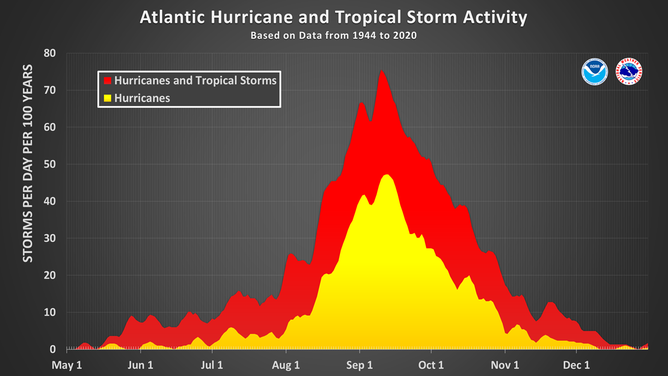
This chart shows the amount of tropical cyclone activity, in terms of named storms and hurricanes, that occurs in the Atlantic Basin on each calendar day between May 1 and Dec. 31. Specifically, it shows the number of hurricanes (yellow area) and the combined named storms and hurricanes (red area) that occur on each calendar day over a 100-year period. The chart is based on data from the 77-year period from 1944 to 2020 (starting at the beginning of the aircraft reconnaissance era) but normalized to 100 years. The official hurricane season for the Atlantic Basin is from June 1 to Nov. 30, but tropical cyclone activity sometimes occurs before and after these dates, respectively. The peak of the Atlantic hurricane season is Sept. 10, with most activity occurring between mid-August and mid-October.
(National Hurricane Center / NOAA)
Although the official start of the Atlantic hurricane season is June 1, a tropical cyclone developed earlier than that date in eight of the past nine years, including 2023. That proves not every hurricane season follows a strict calendar.
NEAR-AVERAGE 2023 ATLANTIC HURRICANE SEASON EXPECTED WITH UP TO 17 NAMED STORMS, NOAA SAYS
Since 2015, the only year without a pre-season storm was 2022 when Tropical Storm Alex, the first Atlantic tropical cyclone of 2022, didn't develop until June 5. But it was a close call when an area of low pressure in the Gulf of Mexico was monitored for tropical development in the Gulf of Mexico a week before Memorial Day.
The early start to the season returned in 2023 after the NHC determined in a reassessment published on May 11 that the Atlantic hurricane season actually began in mid-January when a subtropical storm formed off the U.S. East Coast. These kinds of storms derive most of their energy from the clash of warm and cold air but don't have fronts associated with them.
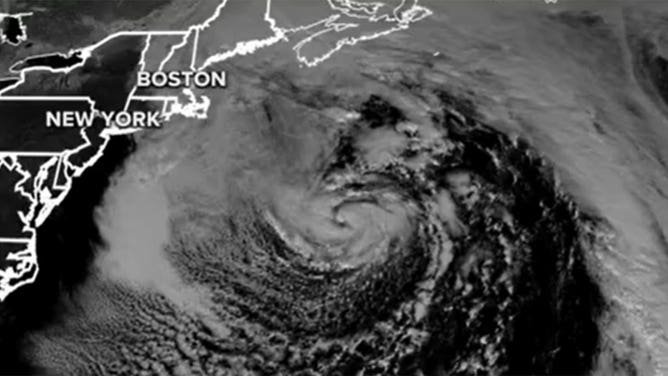
A subtropical storm is seen on satellite in January 2023 as it spins through the North Atlantic Ocean.
(FOX Weather)
Recent tropical storms, hurricanes that formed before June 1
Two years ago, in 2021, Tropical Storm Ana briefly roamed the central Atlantic Ocean between May 22 and 23. It developed east of Bermuda but quickly moved northeastward away from the archipelago and out to sea.
ATLANTIC HURRICANE SEASON STARTED EARLY IN 8 OF PAST 9 YEARS
Ana briefly produced gale-force winds over portions of Bermuda, but no other impacts were reported on land from this short-lived storm.
In May 2020, there was not one, but two tropical storms that had impacts in the U.S. Tropical Storm Arthur tracked just off the Southeast coast between May 16 and 19 and brought a soaking rain to parts of eastern North Carolina.
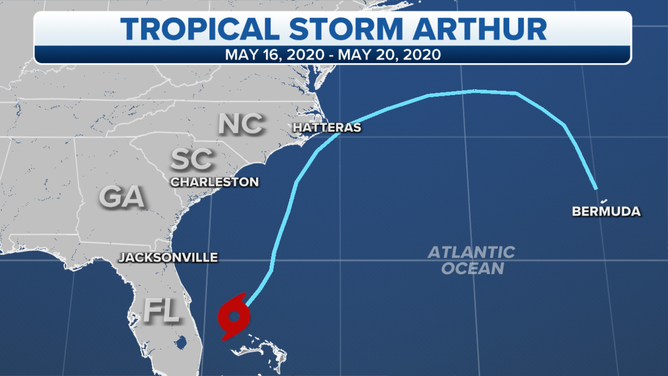
The track of Tropical Storm Arthur, May 16-20, 2020.
(FOX Weather)
The following week, Tropical Storm Bertha made landfall near the Isle of Palms, South Carolina, on May 27 with locally heavy rain and gusty winds. It dissipated over the Appalachians on May 28.
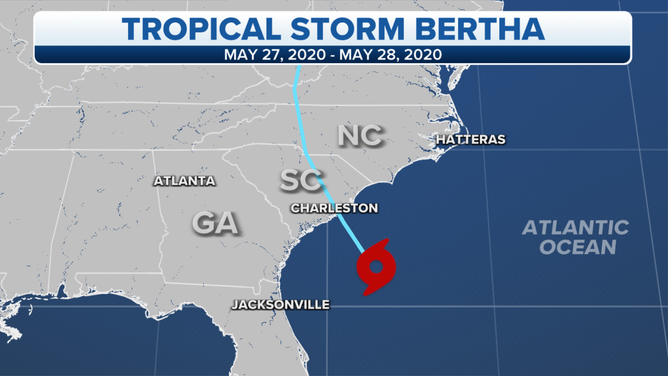
The track of Tropical Storm Bertha, May 27-28, 2020.
(FOX Weather)
May 2019 had Subtropical Storm Andrea the week before Memorial Day, but it stayed over the open waters of the Atlantic southwest of Bermuda.
Memorial Day 2018 was a memorable one for residents of the Florida Panhandle as Tropical Storm Alberto made landfall near the Bay/Walton County line for the unofficial start of summer. Alberto maintained its tropical characteristics all the way into Michigan.
The early start to hurricane season in 2017 was actually in April, when Tropical Storm Arlene developed over the open waters of the central Atlantic Ocean on April 20. It was only the second tropical cyclone on record in the Atlantic to form in April; Ana in 2003 was the first, according to the NHC.
WHERE TROPICAL STORMS, HURRICANES TYPICALLY OCCUR DURING EACH MONTH OF ATLANTIC HURRICANE SEASON
In 2016, the season started roughly as early as it did in 2023 when Hurricane Alex formed in January in the northeastern Atlantic Ocean. It went on to make landfall as a tropical storm in the Azores on Jan. 15 with maximum sustained winds of 65 mph.
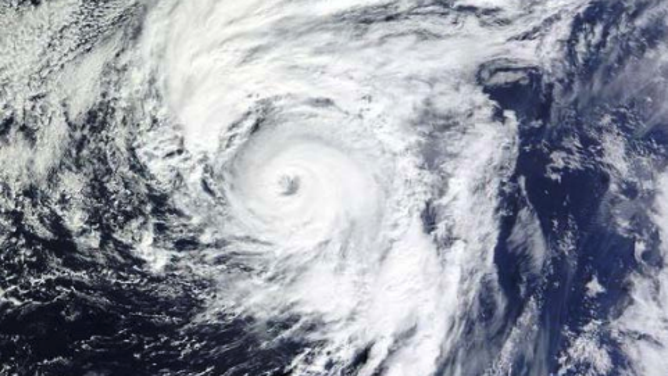
NASA-MODIS satellite image of Alex at 10:30 a.m. EST on Jan. 14, 2016.
(NASA-MODIS)
Then, Tropical Storm Bonnie became the second pre-season storm of 2016 in May. It made landfall as a tropical depression on May 29 on the Isle of Palms, South Carolina, and dumped heavy rainfall along coastal sections of the Carolinas.
ATLANTIC, EASTERN PACIFIC TROPICS CAN BEGIN TO AWAKEN IN MAY
On Mother’s Day weekend in 2015, Tropical Storm Ana – the same name as the "A" storm in 2021 since Atlantic tropical cyclone name lists are reused every six years – made landfall along the northeastern coast of South Carolina near North Myrtle Beach. Its early-morning landfall on May 10 was the second-earliest U.S. landfall by any tropical cyclone on record, behind only a February 1952 tropical storm that made landfall in Florida, according to Eric Blake, a senior hurricane scientist at the NHC.

The tracks of pre-June 1 named storms in the Atlantic from 2015 through 2021.
(FOX Weather)
Despite all the recent early-season activity since 2015, the NHC has not yet adjusted the start date of hurricane season, although in 2021, it did begin issuing routine Atlantic tropical weather outlooks on May 15 instead of the usual June 1.
WHY THE START DATE OF THE ATLANTIC HURRICANE SEASON WON'T CHANGE ANYTIME SOON
The NHC says the peak of hurricane season is from mid-August to mid-October, with Sept. 10 marking the official peak date of the season.
